Every person receiving external beam radiotherapy will experience some skin changes in the treatment area. Skin changes or reactions occur because radiation causes an imbalance between the normal production of new cells and damaged cells.
When Does Skin Reaction Happen?
Early side effects are the changes or reactions of normal tissues that happen during radiation treatment. Most of the skin reactions happen around the second week of radiation treatment. It may continue until 1 to 2 weeks after treatment has stopped. Skin recovery may take another 3 to 4 weeks.
What Are The Symptoms of Early Skin Reaction?
Symptoms of early skin reactions that may take place in the treatment areas are such as:
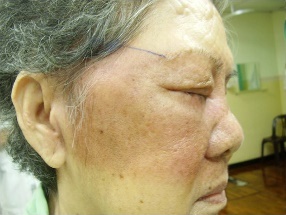 |
|
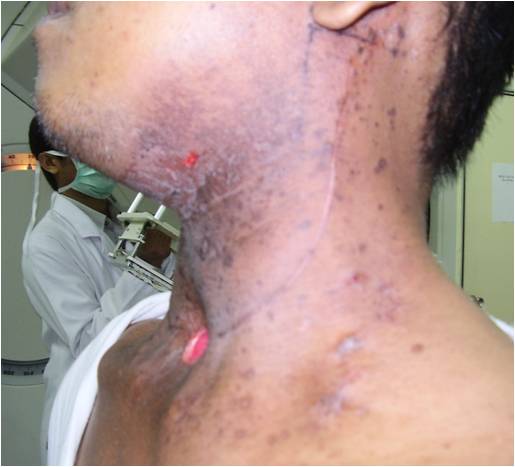 |
|
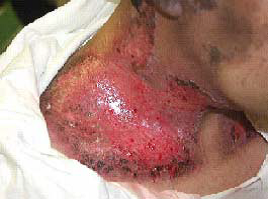 |
|
What Can Make The Skin Reactions Worse?
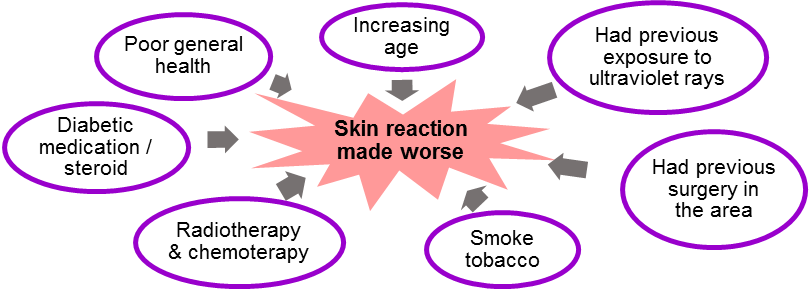
Usually the skin reactions are more serious when the total radiation dose received by the skin tissue is higher and there are a large area of normal skin in the treatment area. Several other conditions (refer to graphic) can make the skin reactions worse.
How To Take Care Skin And Reduce Reactions?
|
|
|
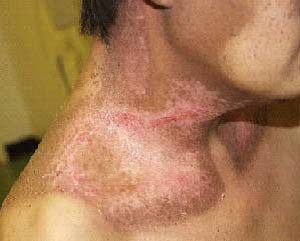
Open sores with proper medical care may take 1 to 2 months to heal completely. Skin over the treatment area that has recovered may appear darker in color, thinner and more sensitive than those around it.
Are There Any Late Skin Reactions?
Late side effects are reactions that may occur months or years after radiation treatment has stopped. Late skin reactions are rare because the latest radiotherapy equipment and techniques are able to minimize skin reactions.
Examples of late reactions are skin thickening (fibrosis) and skin with red dots due to small dilated blood vessels (telangiectasia). This skin appearance may take years to become normal.
Radiotherapy is designed specially for each individual, taking into consideration the radiation effects on normal tissues in the treatment area. However, every person is unique and may react differently to the radiation treatment.
Find out information about the specific side effects that may occur with your treatment from the radiation oncologist and radiation therapist before treatment begins. Always let them know what you are experiencing and how you feel so that they can help you to minimize the symptoms, to reduce anxiety and to cope better.
References
- http://www.cancer.org/treatment/treatmentsandsideeffects/treatmenttypes/radiation/understandingradiationtherapyaguideforpatientsandfamilies/understanding-radiation-therapy-common-side-effects
- www.cancer.gov
- Managing radiation induced skin reactions – A toolkit for healthcare professionals. 2011
- Images from slide presentation of Suzanne So-Shan Mak, Nurse Specialist Department of Clinical Oncology, Prince of Wales Hospital
- Images from slide presentation of Aishah SA. Side effects of Radiotherapy and Patient care
| Last Review | : | 26 May 2017 |
| Writer | : | Sarah Lee Abdullah |
| Accreditor | : | Dr. Ros Suzana binti Ahmad Bustamam |







